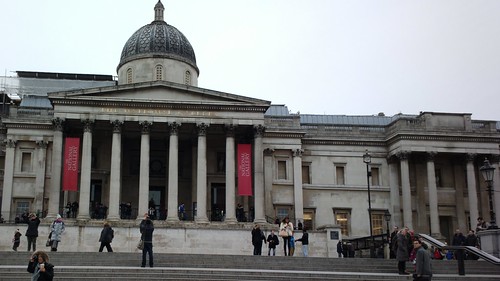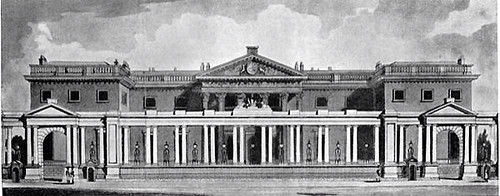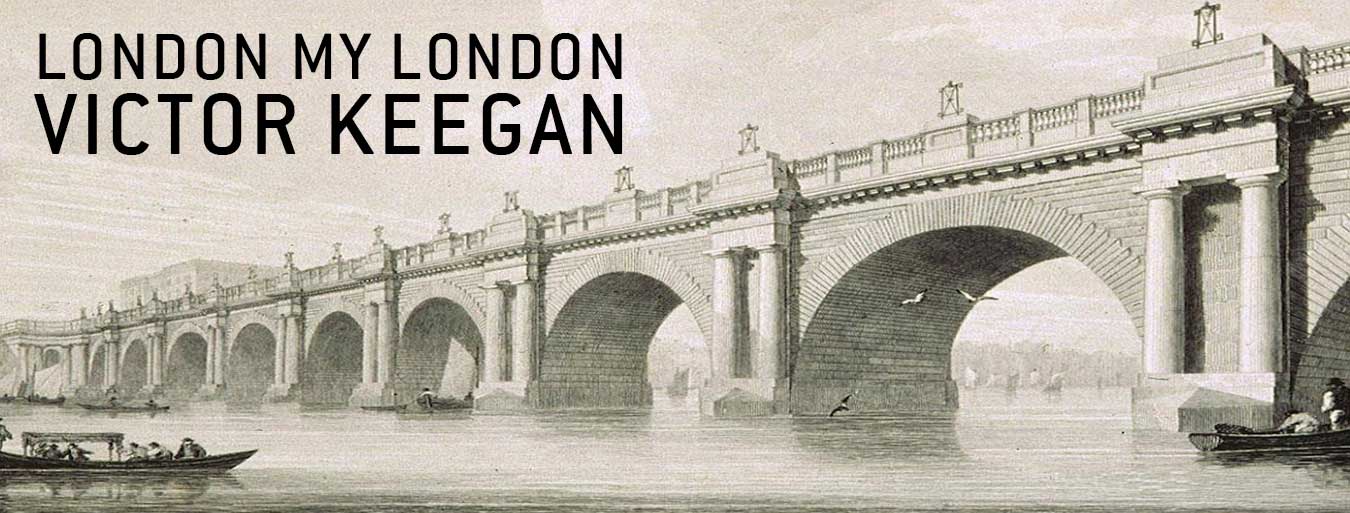

Spot the difference – National Gallery . . . Carlton House
When old buildings in London were pulled down, the bricks and stonework didn’t just walk away. They often lived on in other buildings. It is one of the ways the city preserves continuity with its past. The trouble is no records were kept so we don’t know the half of the story. Stones from the grandiose Savoy Palace in the Strand – given by Henry 111 (1207-1272) to the Duke of Savoy and once the home of John of Gaunt – were recycled into the Royal Coburg theatre (now known as the Old Vic) across the Thames. Millions of bricks from the ill-fated Millbank Penitentiary where convicts were transported to Australia (now replaced by Tate Britain) were used to build the Millbank Estate just behind the Tate where the brickwork can still be seen. This is very close to Pimlico which owes its existence to earth recycled from the construction of St Katharine Docks in the Port of London which was used to tame the marshlands that existed before.
One of the shortest journeys was made by the Corinthian columns now gracing the portico of the National Gallery in Trafalgar Square. They came from the disgracefully opulent Carlton House, (above, right) built by the extravagant Prince Regent before he became George IV in 1820. Carlton House Terrace and the Duke of York steps now occupy part of the ground of the former Carlton House. There are at least 20 places in and around London where you can still find stones from London Bridge (the medieval one as well as unwanted bits of the one went to America.) ranging from a wall in Wandsworth (below, right) to a mansion at Greenhithe, Kent (below, left). Sir Christopher Wren recycled hundreds of stones from previous churches on the site of St Paul’s some of which still carry soot from the Great Fire.


Ingress Abbey (left) and a wall in Wandsworth (right) built of stones from the old London Bridge
The Old Bailey is built on the remains of Newgate Prison (and earlier roman ruins) while the Innholders’ Livery Hall stands on the petrified remains of the earlier hall destroyed by the Great Fire of London in 1666.The rapacious Duke of Somerset, Lord Protector of the boy-king, Edward VI (who became sovereign aged 9 when Henry VIII died in 1547) pillaged buildings including the charnel-house of St. Paul’s and parts of the Priory of St John of Jerusalem at Clerkenwell to build Somerset House. But natural justice took its course: he died before he could move in. Meanwhile, some of the paving slabs from Clerkenwell, pulled up when the world’s first underground railway was built at Farringdon, can now be found in the gardens of Myddleton House in Enfleld which also has parts of the medieval London Bridge and the old St Paul’s. Part of the New River canal that once ran through Myddleton House is filled with earth from the building of the Victoria Line. Everything that goes around, comes around and the stones of London keep rolling on.
For occasional updates, put your email address in the slot on the right of the screen
@vickeegan
